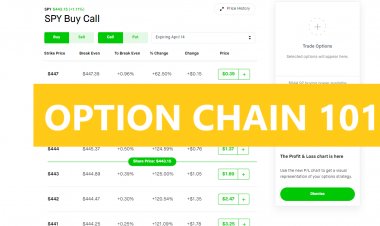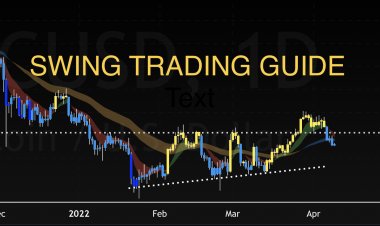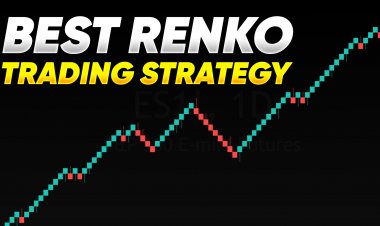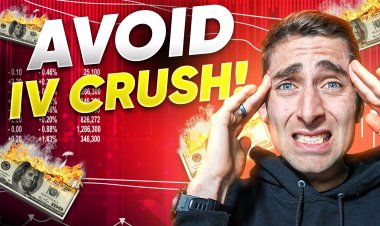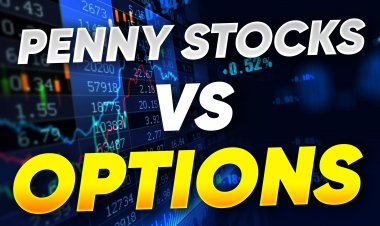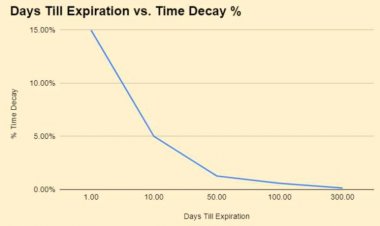How to Pick the Best Options Contract
Your full-fledged guide that entails everything regarding the options contract and how you can easily buy or sell underlying security with this by your side!

The primary reason we are delving into this issue is that many people out there don't know how to look at the proper options contract that they're looking at. A winning trade doesn't necessarily have to ensure maximum profit, and similarly, a losing trade doesn't mean that you really are undergoing a loss and therefore need to sell stock.
Within this article, we will clarify all of your ambiguities to ensure that you know what to look at in the options contracts. Having said that, let's get into it!
What is an Option Contract?
In a nutshell, an option can be classified as a derivative - it is a contract that gives the buyer solely a right, but NOT the obligation, to either buy or sell the underlying asset by its specific expiration date and that too at its strike price.
The two most common options contracts are the call and put options. You can easily purchase the option contracts, speculate on the stock options, including the stock's price or the share price, and then sell them to generate income.
Now the typical stock options contracts have the ability to cover around 100 shares of the underlying stock. However, this amount can be easily adjusted for:
Any special dividends
Mergers that have occurred
Stock Splits.
Understanding A Few Terminologies:
To better understand how you can choose the option contract, we have made a list of a few terms you should know. This will enhance your trading options for the better.
The Call Option:
A call option is where you want to leverage an asset's price, such as a stock or an index. You will then be able to buy a specific amount of shares at the strike price. The contract here will have details regarding the underlying asset you have bought and the strike price it has.
The Put Option:
When you expect to profit from the decline in the price of an underlying asset, you'll want to go for the put option rather than a call option. Here, the buyers of a put option have a right to sell their shares at a strike price listed within the contract.
Additionally, the buyer exercises the control also to sell their contract, which isn't a possibility in call options when the shares aren't held in the portfolio.
The Strike Price:
One needs to understand here that the strike price of an option is also seen as its fixed price. Here the option holder can buy, sell shares, or even purchase or, for that matter, give away its underlying instrument.
Now, the strike price will be set after being referred to as the spot price, also known as the "market price" of the underlying asset.
The Idea Of The Expiration Date:
Also popularly termed "decay," the last expiration date until your option contract is valid. Once the expiry date has elapsed, investors can no longer sell that underlying security on the market, and no other trader or investor has an obligation to buy that asset either.
The Spot Price:
The current market price is known as the spot price in layman's terms. Over here, the underlying securities will be bought and sold at the predetermined price before the contract expires.
Additionally, as the spot price is also needed for setting a benchmark of the strike price, it is extremely useful during the trading of a financial instrument, an option premium, and real estate transactions.
What can I include in an Options Contract?
An options contract consists of:
An underlying security
The type of option
The item that is involved in the contract
The date of the contract's enforcement
A strike price
An expiration date
How do I make my Options Contract pick?
The essential question ultimately boils down to this. Therefore to make your option contract trading top-notch, we have made a list of the steps you should be following.
Note: We are not financial advisers - we are individuals who possess a passion for trading - financial markets, and the idea of an options contract appeals to us. Because of this, we have come up with ways of earning a fixed income via trading. We don't guarantee success, but rather flexibility and a broad horizon in trading.
Step 1: Understanding your buying power

Do not exhaust your budget entirely! In this image, we have a budget of $13k+, so we will only use 10% of this amount.
However, in order to stay within that 10% limit, you can only purchase one of the options contracts here if the option's price is at $1,300 because your price range allows you only to spend that much if you want to stay within the 10% or less of this threshold.
Step 3: Check your Theta Percentage compared to the premium
The key takeaway you get from here is to always stay within only 10% of your Theta limit compared to the total contract price!
If you go beyond it, the chances are that you will be paying more in the money. The further you go from here, the more you'll notice that the percentages will increase, which is why you have to make your pick by being smart about how much to invest.
Step 2: Buying a couple of options contract
The key here is being able to buy 3-4 options contracts because it allows you to scale out and many profit levels.
Step 3: Looking at the Volatility
Whenever you have an options contract, and you need to trade your underlying asset at the strike price, of course, before its expiration date, you should be assessing the implied volatility.
This is because volatility can greatly influence the stock price and the price paid, along with the premium paid to you for the underlying security bought or sold.
Assessing NIO's chart to check for Implied Volatility (I.V):
Implied Volatility in NIOThis is a recent trading chart, where in the first 30 minutes alone, the Implied Volatility of the option position rose from 0.08 to 0.25, which is almost a 200% increase in I.V. Now, this volatility during options contract rises if the underlying security is close to its expiration date.
Therefore, the main takeaway from this is to be aware of I.V cutting out on your premium paid. If the I.V is more than 30%, then that is your queue to be aware that there is something sketchy going on. If, for instance, you buy the option contracts in the morning, and you hold it through volatile periods, then you do risk getting out of the money real soon. This is why you need to ensure that even if you buy or sell the option contracts in a call option or at a specified price, the I.V here should not be greater than a maximum of 40%.
Step 4: Checking at the Fair Price

The Volume and Open Interest categories. The fair price has occupied the notion of an intrinsic value - thankfully, in the options contracts, you have the liberty of using two categories to improve your call option or put option gains. The first is the Volume, whereas the second is the Open interest value.
Now, these are two imperative spectrums that you need to make use of. The volume and the open interest should both be high. Whether the call options are weekly or monthly, it doesn't matter as long as they are both high. Open interest is where there are certain options contracts that are open and have to be closed before the option expires.
The bigger your account, the higher your open interest and volume numbers.

The Limit Price is based on the Open Interest and the VolumeIf both of these are, then the buyers and sellers will be filling the bid asking price at a good price. Hence, chances are the buyer profits here will skyrocket, and the actual purchase could reap a ton of benefits.
Additionally, we notice in the image above the amount of spread. When there is a call option transaction in place, you want to make sure that you do not buy options with a spread greater than 15 or 20%. In the above, the spread is 5%, which is therefore considered safe when selling options at the agreed-upon price/ or its specific price.
Contextualizing the above via a case study:

n this image, look at the call options. You see that the volume is 0, whereas the Open Interest is 55. This means that 55 people are interested in buying this. Hence, this leads us to analyze the spread (limit price), which from $0.70 - $1.00 is up to 30%. This implies that you shouldn't be trading, as the potential losses are greater.
On the other hand,

A Favorable OutcomeThe Bid-Ask spread is highly favorable in the following, as it is less than 5%. Moreover, this also has a very high potential to give high returns on investment as the Open Interest options are at 60,000, and the volume is at 975. Thus, fewer problems and more success with this option at your disposal!
Step 5: Scrutinizing the Expiry Date
Another vital component in the options contract, the expiry date, holds great significance when you sell the underlying asset at its strike price within a specified period.
For the sake of clarity here, the example we have is of the Comcast Corporation's chart, which we will be shedding light on.
Now below, Comcast seems like it will give a cloud flip and go back to yellow again.
The above image seems to be a $1 or $2 move, from either $48 or $49, which looks favorable. However, we are concerned with the amount of time it will require to make that move. For this, the indicator which we will be looking at is the Average True Range (ATR) (an indicator that illustrates how much the candle is moving on average)
Over here, the ATR is moving at 50 cents on average, within a three-hour time frame. This showcases the number of candles you will need to make your move.
If it is three days out, the chances are that your income may rise, but alas! with every good thing, there is a risk attached!
The risk?
There is a possibility of your suffering from more time decay, but you might not get stopped out if you have enough time on. Taking an extra seven days, in this case, can help, and you'll be safer.
Step 6: Risk to reward is there

In the image above, the risk and reward are apparent. You are taking the risk of $38.00, but the profit this will be yielding is higher at least $62.00. This implies that both the risk and rewards are there, and you can easily trade, as there is a possibility of a little more than 100% return. Lastly, the time decay is also minimum.
Taking a look at the metrics
A fascinating thing about the Options Contracts market is that it is used to describe the varying dimensions involved. It makes use of the Greek terms, which illustrate the different options position portfolio available.

Another thing to denote here is that every variable is the result of a relationship of the option with another variable. Some of those options sold terms are:
Theta:
This is an adequate representation of change between option time and price - also known as time decay. Hence, Theta indicates the underlying's price that will decrease at the time of the asset's expiry, provided that all else is equal.
Gamma:
Also referred to as the second derivative, Gamma is a representation of the rate in change of the price of the underlying asset, or the underlying stock, and the option's delta.
Delta:
It possesses a range between 0 and 1 and is the price sensitivity of the call option or the put option to the underlying asset.
Vega:
Vega measures the call option or the put option's sensitivity to volatility. It is an indication of the rate of change between the option's value, along with the implied volatility of the underlying asset.
The above is the Greek terms, which play a crucial part in helping you decipher the Options Contract with ease and aiding you in making informed investment decisions.
What are the benefits of the Options Contract?
Some advantages of Options Contract trading is that:
They are cost-efficient:
Owing to the fact that these contracts have great leveraging power, the employee incentive to invest in them is therefore high. Thus, this makes these contracts are suitable to pick to use.
They have low risk attached:
The risk here really depends on how you use the contract. If you are aware of the Theta, the Delta, and the notion of the bid-ask spread, and employ that knowledge in your trading, then you are good to go.
More returns:
This isn't just limited to an interest rate; rather, it also revolves around the stock's price, the market price, and the premium paid to you from an option buyer. If the bid-ask spread is at 5%, and the I.V is also low, then the chances are that you will be in a favorable position to earn higher returns. It also depends on how you trade and what strategy you have up your sleeve.
How profitable is Options Trading?
Options Trading gives you the benefit of being able to help you reap the same benefits as would in an outright stock or even a commodity trade. But, the best part is that the risk is low, and so is the money on the line.
Hence, if we present a more objective take on this, then it wouldn't be wrong to say that with Options Trading, you are practically taking advantage of the same options as you would if you were working in the field of stocks or commodities for that matter. However, many call traders opt for this kind of trading owing firstly to the limited risk attached and secondly the probability of a higher percentage return on the amount invested.
The Bottom Line: The Options Contracts Can Work If You Know How It's Done!
We have given you a detailed illustration of the following in the above. It doesn't matter if you are trading as two private parties or with standardized contracts by your side. What takes precedence here is understanding how the market works.
Strike prices, the option's price, spot price, stock price, and the purchase price are fascinating realms to explore. But, before you embark on this journey as a call buyer, you have to reflect on the ways you can sell calls at a certain price without losing too much at the back end.
After that is done, if you follow our ways of picking the best options contract, which we have talked about in-depth, we are positive that your hard work will pay off, and your returns will be high.
Note: What we talk about in our articles is based on what has worked for our members and us. We are not financial advisors, and what may have worked for one may not necessarily be the case for others. Our objective is to help and offer clarity with regards to the dynamics and the workings of the Options Contract.
Key takeaways from the above discussion:
Firstly, look at the options contract and the data, by paying attention to its affordability,
Secondly, the price shouldn't be more than 10% of your budget
Thirdly, please pay attention to the Greek terms, especially the Delta, and make sure it is between 3, 4 or 5. Also, check the volatility, which shouldn't be more than 40%.
Fourthly, check the move with the ATR to look at the expiration date.
Lastly, once the option expires, you want to be at the better end of the bargain, which is why you should pay heed to the risk and reward components.
Frequently Asked Questions (FAQs):
Are Options Contract always 100 shares?
The stock option contract does represent 100 shares of the underlying stock. This means that you have to take into account multiplying by 100 to get the total price of your contracts.
Can you buy multiple options contracts?
Yes, you can, but the key here, as mentioned above, is to ensure that you take into account factors such as Implied Volatility, which shouldn't be greater than 40%. Moreover, you should only be exhausting 10% of your total income.
How many Options Contracts are too many?
Anything above the 10% price range threshold is considered "too many" and should be avoided.
How much premium can you earn on the Options Contracts?
The premium received is the price a buyer ends up paying to the seller for an option. The option premium is then paid up on the front and cannot be refunded.
What is per Options Contract?
This agreement takes between two parties to facilitate the transaction, which has a strike price and an expiration date set within it.
What does not the obligation to buy mean?
Under the concept of call options, what this amounts to is that you have no obligation to trade on the given strike price. Whether the stock price rises, there is no need to trade on this specific market price.
The option buyer, therefore here is in full control as to whether he/she has to trade on the prevailing market price and the strike price or not.
Trade with us!
If you're looking for a more sophisticated and educational options trading experience, look no further than "Market Moves Premium Options Trading Group." Our exclusive 7-day membership offers swing trading set-ups, fast text signals, and +100 hours of educational content. Plus, you'll have access to live trading sessions twice per day. So if you're ready to take your options trading to the next level, join us today!
Financial Disclaimer: Market Moves LLC is a company that provides education in financial and stock market literacy. WE ARE NOT FINANCIAL ADVISORS. In fact, it is illegal for us to provide any financial advice to you. Under U.S. law, the only persons who can give you financial advice are those who are licensed financial advisors through the SEC. Results shown from Market Moves LLC or customers who use our product and/or service are individual experiences, reflecting real-life experiences. These are individual results, and results do vary. Market Moves LLC does not claim that they are typical results that consumers will generally achieve. Past performance does not guarantee future results. You should not rely on any past performance as a guarantee of future investment performance











